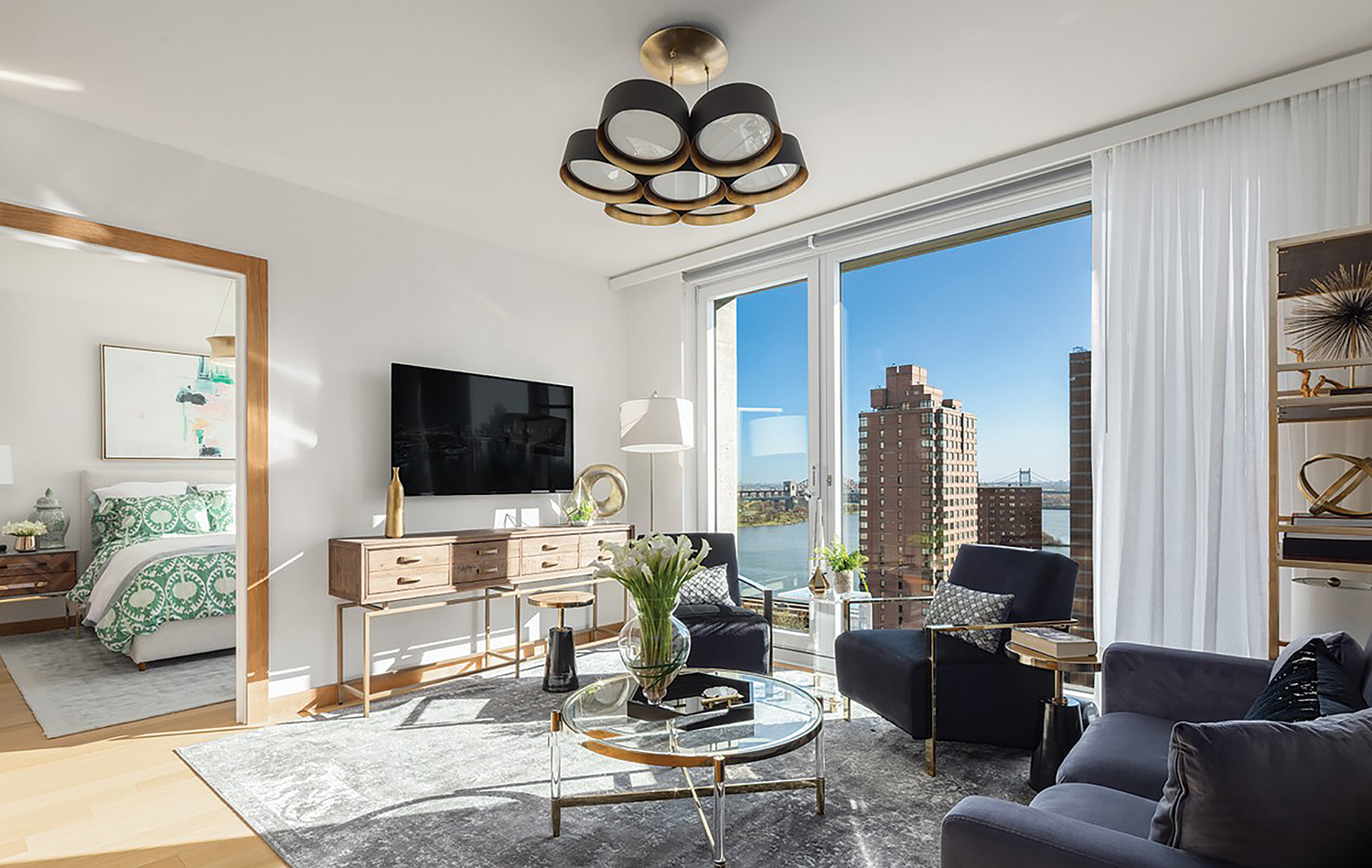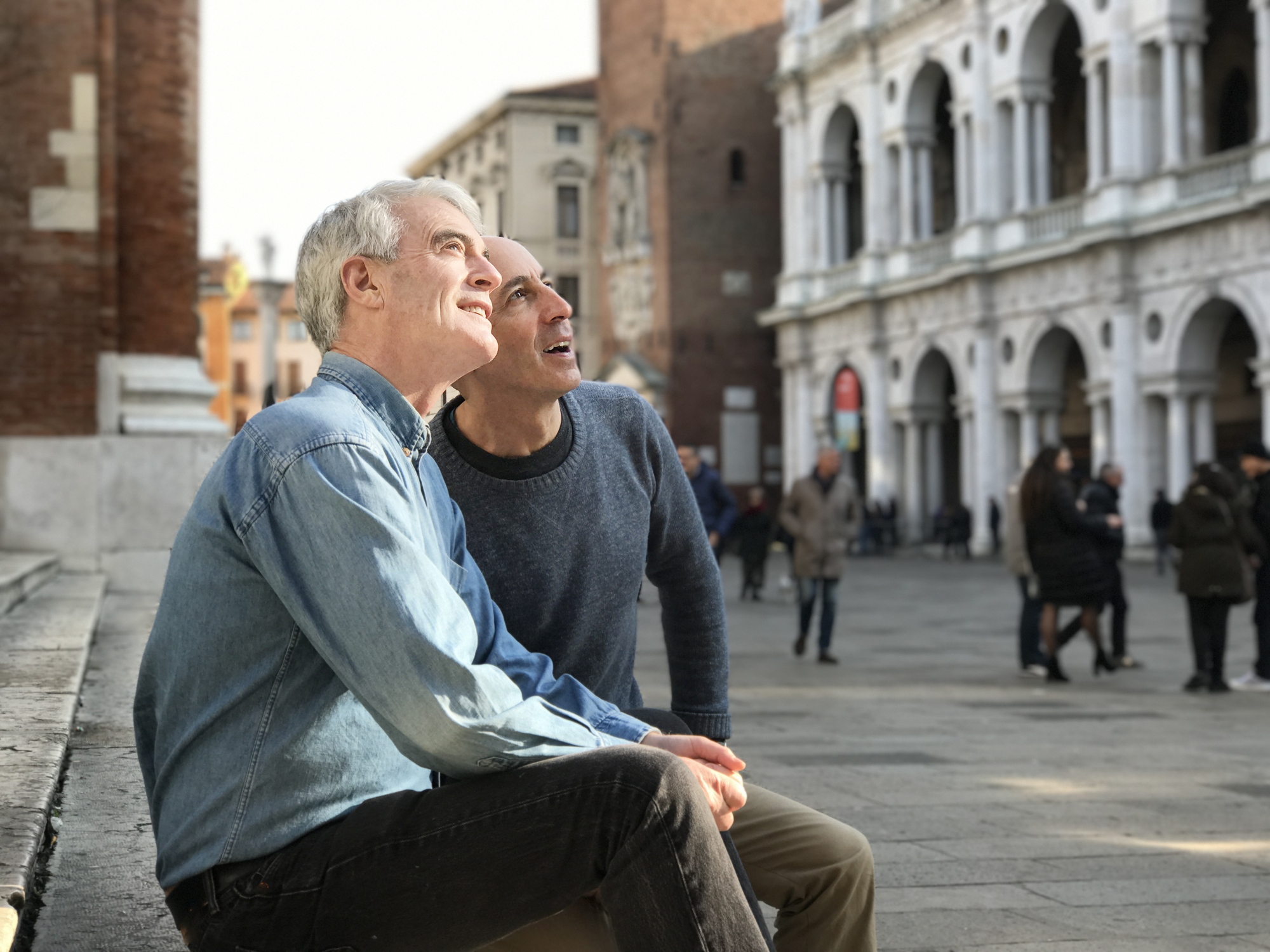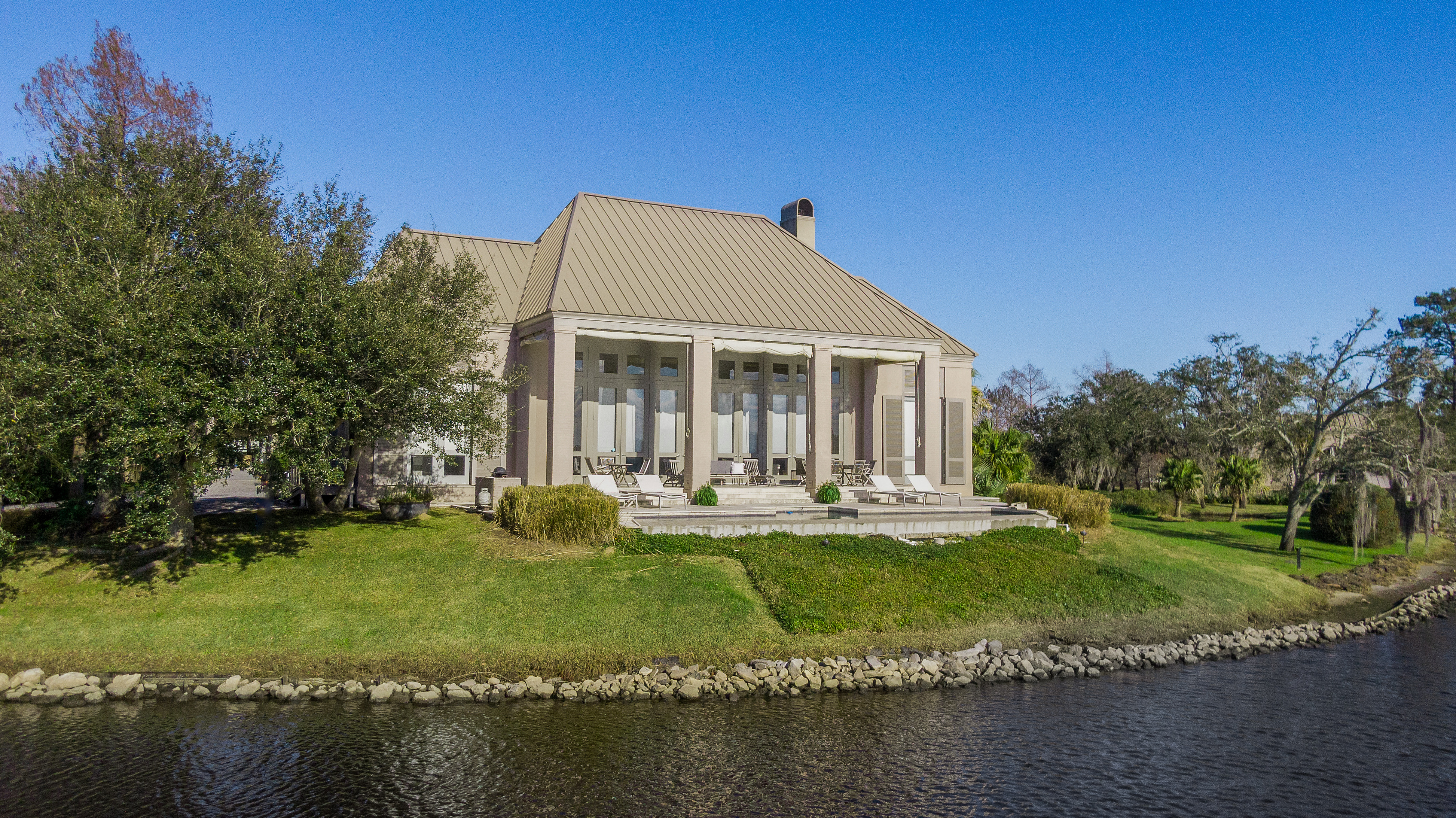Where the Ultra-Wealthy Retire
Luxury retirement communities for the ultra-wealthy are springing up. With upscale amenities, the retirement living sector is upping its game.

Erica Jong had the audience’s rapt attention. The 82-year-old writer, famous for her 1970s bestseller Fear of Flying, was discussing creativity and her need to capture the world around her in prose and poetry.
Hands shot up with questions: “What was it like growing up in a literary family?” “What made you want to write?” “Can you describe the process you use to decide on a theme for a new book?”
As Jong spoke, sunlight streamed through 24-foot windows. Just outside, trees swayed in the breeze; inside, where the crowd had gathered, it looked like money. The walls were clad in red onyx marble and the beamed ceiling was crafted from white oak.

Sign up for Kiplinger’s Free E-Newsletters
Profit and prosper with the best of expert advice on investing, taxes, retirement, personal finance and more - straight to your e-mail.
Profit and prosper with the best of expert advice - straight to your e-mail.
Jong could have been delivering a lecture at a Toney Ideas festival anywhere from Aspen to Cape Town. Instead, the author and her audience were ensconced on the 17th floor of a retirement living facility called the Inspīr Carnegie Hill on the Upper East Side of New York City. Jong lives in the complex. So do most of those who were in attendance.
Some afternoons, the residents pass the time serenaded by a string quartet. On others, they might pop into the onsite spa for a facial, or enjoy a cocktail in the lobby bar furnished like a 5-star hotel. It’s the creme de la creme, says resident Marilyn Snyder. “There is nothing that compares to this.”
What does upscale retirement living look like?
The retirement living industry is upping its game. With older Baby Boomers aging out of active living, a handful of developers are pivoting to retirement homes that allow the wealthy to age in place and in style. Called continuing care retirement communities, these complexes offer independent living, assisted living and memory care, all within the same building or campus. One iteration, referred to as life care, goes a step further and includes skilled nursing, staffed with trained registered nurses and other licensed healthcare professionals. The goal is to make aging as seamless as possible.
The basic continuing-care model is a long-standing one, as are high-end projects, where beauty salons, fitness centers, and upscale dining are standard fare. What’s new is the next-level razzle-dazzle.
The River’s Edge, due to open in 2025-2026, will offer a saltwater pool, a spa and a fitness center, all set on 32 wooded acres overlooking the Hudson River north of Manhattan. Decor at the Palace Weston, which opened near Fort Lauderdale in 2021, was inspired by the George V Hotel in Paris and includes valet parking, an English-style library and four-course dinners with wine pairings. The Mather, a 27-story high-rise in Tysons, Virginia, boasts three restaurants, a bar and aquatics classes accompanied by a cellist. When the property opened in March 2024, it was 87% reserved.
‘Looking for a lifestyle’
“When we did listening sessions, people said, ‘We don’t need the cheapest salmon, we want the freshest,' ” says Gale Morgan, Mather’s vice president of sales. “If you’re eating off Villeroy & Boch china when you move in, you will be eating off Villeroy & Boch here,” says Morgan. Mather operates four facilities around the country.
Operators are following the Baby Boomer demographics — 50 million retirees today, and 80 million by 2050. Today, the top 10% of retirees have a minimum net worth of just under $2 million, with the top 5% sitting on more than $3 million.
“Boomers are demanding and not afraid to spend money and want the physical plant to support it,” says Tom Gaston, the chief investment officer of Maplewood Senior Living, which operates 17 properties around the country, including the Carnegie Hill Inspir and a soon-to-be-opened sister facility in Washington, D.C. “We are talking about people with one or two homes, multiple cars, who have their house updated. They are looking for a lifestyle.”
Factors to consider
Like the whole of the service industry, retirement living operators are navigating a chronic staffing shortage, with difficulties in finding not only caregivers but also housekeepers, valets and others. Regulations, from building permits to licensing, can vary from state to state and can be stringent (or not).
For residents, the financial decisions can be complex, wrapping together estate planning, the sale of real estate and the intricacies of long-term care insurance. “In the past, seniors had physicians to advise them,” says Morgan, “Now they have financial planners and estate planners.”
Once a retiree has moved in, adjusting to congregant living can also take time. “In the luxury market, you’ve got people who had servants and cooks and housekeepers they ordered around,” says Susan Hulett, president of the resident council at the Variel in Woodland Hills near Los Angeles, where perks include a private movie theater, golf simulator room and a penthouse-level lounge looking out at the Santa Monica Mountains.
“In your own home, you can do whatever you want when you want, but in a community, you have to give up some of your autonomy.”
What are the costs for luxury retirement?
The earliest U.S. facilities that provided continuing care date to the early 1900s and were affiliated with religious or fraternal organizations. Typically, residents turned over their assets in return for a guarantee of lifetime healthcare (thus, the coined term “life care”). Today, applicants aren’t required to empty the bank, but they are vetted financially to make sure they will be able to afford payments.
As a rule of thumb, the prospective resident is required to have assets worth 1.5 to 2 times the entrance fee — which can range from about $250,000 to as much as $4 million plus. They must also pass a cognitive evaluation and physical exam to make sure they are healthy enough to enter the facility, in units dedicated to independent living.
Both nonprofit and for-profit developers exist, with the luxury sector dominated by the latter and non-profits hewing most closely to the traditional entrance-fee contract.
Entrance fees are determined by an array of factors, including the local real estate market and the level of care desired. A percentage of the fee (typically 0% to 90%) may be refunded to the resident’s heirs, depending on the terms of the contract (see sidebar). In addition, there are monthly fees in the $3,000 to $12,000 range that cover day-to-day expenses and amenities. Depending on the type of contract, the fees can increase with each move to a higher level of care; there may also be annual hikes for inflation.
Entrance fees at The Mather in Tysons, Virginia, range from $678,300 to $4.4 million and monthly fees range from $3,420 to $11,820. Almost two-thirds of depositors have signed up for life care. Two bedrooms went the fastest. Seven residents took two apartments to combine them into one; one couple bought side-by-side units. The Mather in Evanston, Illinois, outside Chicago, which has almost 300 units, and where entrance fees range from $650,000 to $2 million, has a four-year waiting list.
The other model for multi-level care communities is straight rental. They require no entrance fee, and no financial or health vetting, but monthly payments run much higher. At Coterie Hudson Yards in New York City, for example, independent-living residences start at $10,800 per month for a studio apartment and $28,200 per month for two bedrooms. Memory-care studios start at $20,800. At the Inspīr Carnegie Hill, where 70% of the units are occupied, rates for an independent living studio start at $11,000 and $27,000 for a two-bedroom.
Retirees who choose rentals may be betting they won’t suffer a stroke or other long-term debilitating health event that would require skilled nursing, but also trust their investment savvy. “A lot of seniors are doing the math and saying, ‘I’ll manage my half a million myself, thank you very much,’ ” says Andy Carle, the lead Instructor for the graduate curricula in senior living administration at Georgetown University.
Views from the community
For Hulett, who turns 80 this month, the move into a continuing care facility crystalized after an accident that shattered her ankle. Recovered, Hulett began the touring process in January 2022, and by August, she had sold her home of 38 years and moved into the brand-new Variel in Woodland Hills in Los Angeles’ San Fernando Valley. She liked the complex’s bright and airy feeling, emphasis on health and physical and intellectual activities. “My daughter was worried I wouldn’t like it, but everything went so smoothly,” she says.
Now Hulett goes to 10 exercise classes a week, enjoys hanging out in the sky lounge, and a monthly Socrates Cafe, where residents discuss questions like “What is the boundary between government responsibility and personal responsibility?” and “Is life ever not worth living?”
“I love the interaction with other people and the fact I can make a choice at any time to be with people or alone,” she says.
The calculus for Shirley and Jim O’Brien, musicians and academics who moved into the Splendido Rancho Vistoso in Tucson, Arizona, in January 2023, hinged largely on making sure both husband and wife would be in good hands in the case one spouse fell ill before the other. Their concern: Shirley, 83, was bad at finances and Jim, 84, was not a cook. “At some point, he would need to eat and I will need to pay the bills,” Shirley says, so a life care plan made sense.
They sold their house and put down the $750,000 entrance fee for a 1,700-square-foot villa. “We have everything we had before,” says Shirley, including a garage for the couple’s Tesla and Corvette. She has taken fitness classes, long walks and ukulele lessons; he has taken courses in geology and together they have put on musical shows for some of the residents in memory care.
For Shirley, one top feature is the Splendido’s food “and that I’m not cooking it,” and the fact they have a smart home, with blinds, lights, ceiling fans, and other electronics that are voice-activated. “I can stand in the middle of the room and say, ‘Play Bach,’ ” she marvels.

Retirees like the O’Briens and Hulett are not the only ones satisfied with their lives in the continuing care community. Industry-wide, fewer than 2% to 3% of residents cancel their contracts, according to Georgetown’s Carle. When researchers from the University of Central Florida surveyed 332 continuing care residents in 2021, they found that the retirees gave high marks to not only the medical services and activities their communities offer, but to cost, value, and above all, the social connections of congregate living.
That satisfaction of course doesn't mean there won’t be rough patches, especially in the early days, since living with others in a complex — whether an urban high rise or suburban spread — is not the same as living at home. It is not uncommon for issues to play out in a property’s restaurant. At the Variel, for example, some residents wanted to eat their meals in slippers and bathrobes, says Hulett. Others have bristled at first come, first serve rules, insisting on specific tables, not just what’s available.
It took a culinary committee of residents to develop policies and bring order to the situation. Among other things, coarse language is prohibited, and guests must be accompanied to their table by the host. Break the rules once and you get a warning. Break them twice, and you’re banned for two weeks and have to have your meals delivered to your apartment.
“We have to change behaviors,” says Hulett. As president of the residents’ council, she hopes to help that happen. “I love this place. I want to work with residents to create the community we all want to live in.”
Note: This item first appeared in Kiplinger Retirement Report, our popular monthly periodical that covers key concerns of affluent older Americans who are retired or preparing for retirement. Subscribe for retirement advice that’s right on the money.
Related content
Get Kiplinger Today newsletter — free
Profit and prosper with the best of Kiplinger's advice on investing, taxes, retirement, personal finance and much more. Delivered daily. Enter your email in the box and click Sign Me Up.
-
 The AI Doctor Coming to Read Your Test Results
The AI Doctor Coming to Read Your Test ResultsThe Kiplinger Letter There’s big opportunity for AI tools that analyze CAT scans, MRIs and other medical images. But there are also big challenges that human clinicians and tech companies will have to overcome.
By John Miley Published
-
 The Best Places for LGBTQ People to Retire Abroad
The Best Places for LGBTQ People to Retire AbroadLGBTQ people can safely retire abroad, but they must know a country’s laws and level of support — going beyond the usual retirement considerations.
By Drew Limsky Published
-
 Best Places for LGBTQ People to Retire Abroad
Best Places for LGBTQ People to Retire AbroadLGBTQ people can safely retire abroad, but they must know a country’s laws and level of support — going beyond the usual retirement considerations.
By Drew Limsky Published
-
 Financial Planning's Paradox: Balancing Riches and True Wealth
Financial Planning's Paradox: Balancing Riches and True WealthWhile enough money is important for financial security, it does not guarantee fulfillment. How can retirees and financial advisers keep their eye on the ball?
By Richard P. Himmer, PhD Published
-
 A Confident Retirement Starts With These Four Strategies
A Confident Retirement Starts With These Four StrategiesWork your way around income gaps, tax gaffes and Social Security insecurity with some thoughtful planning and analysis.
By Nick Bare, CFP® Published
-
 6 Luxury Waterfront Homes for Sale Around the US
6 Luxury Waterfront Homes for Sale Around the USFrom private peninsulas to lakes, bayous and beyond, Kiplinger's "Listed" series brings you another selection of dream homes for sale on the waterfront.
By Charlotte Gorbold Published
-
 Six Reasons to Disinherit Someone and How to Do It
Six Reasons to Disinherit Someone and How to Do ItWhether you're navigating a second marriage, dealing with an estranged relative or leaving your assets to charity, there are reasons to disinherit someone. Here's how.
By Donna LeValley Published
-
 Should You Still Wait Until 70 to Claim Social Security?
Should You Still Wait Until 70 to Claim Social Security?Delaying Social Security until age 70 will increase your benefits. But with shortages ahead, and talk of cuts, is there a case for claiming sooner?
By Evan T. Beach, CFP®, AWMA® Published
-
 Retirement Planning for Couples: How to Plan to Be So Happy Together
Retirement Planning for Couples: How to Plan to Be So Happy TogetherPlanning for retirement as a couple is a team sport that takes open communication, thoughtful planning and a solid financial strategy.
By Andrew Rosen, CFP®, CEP Published
-
 Market Turmoil: What History Tells Us About Current Volatility
Market Turmoil: What History Tells Us About Current VolatilityThis up-and-down uncertainty is nerve-racking, but a look back at previous downturns shows that the markets are resilient. Here's how to ride out the turmoil.
By Michael Aloi, CFP® Published